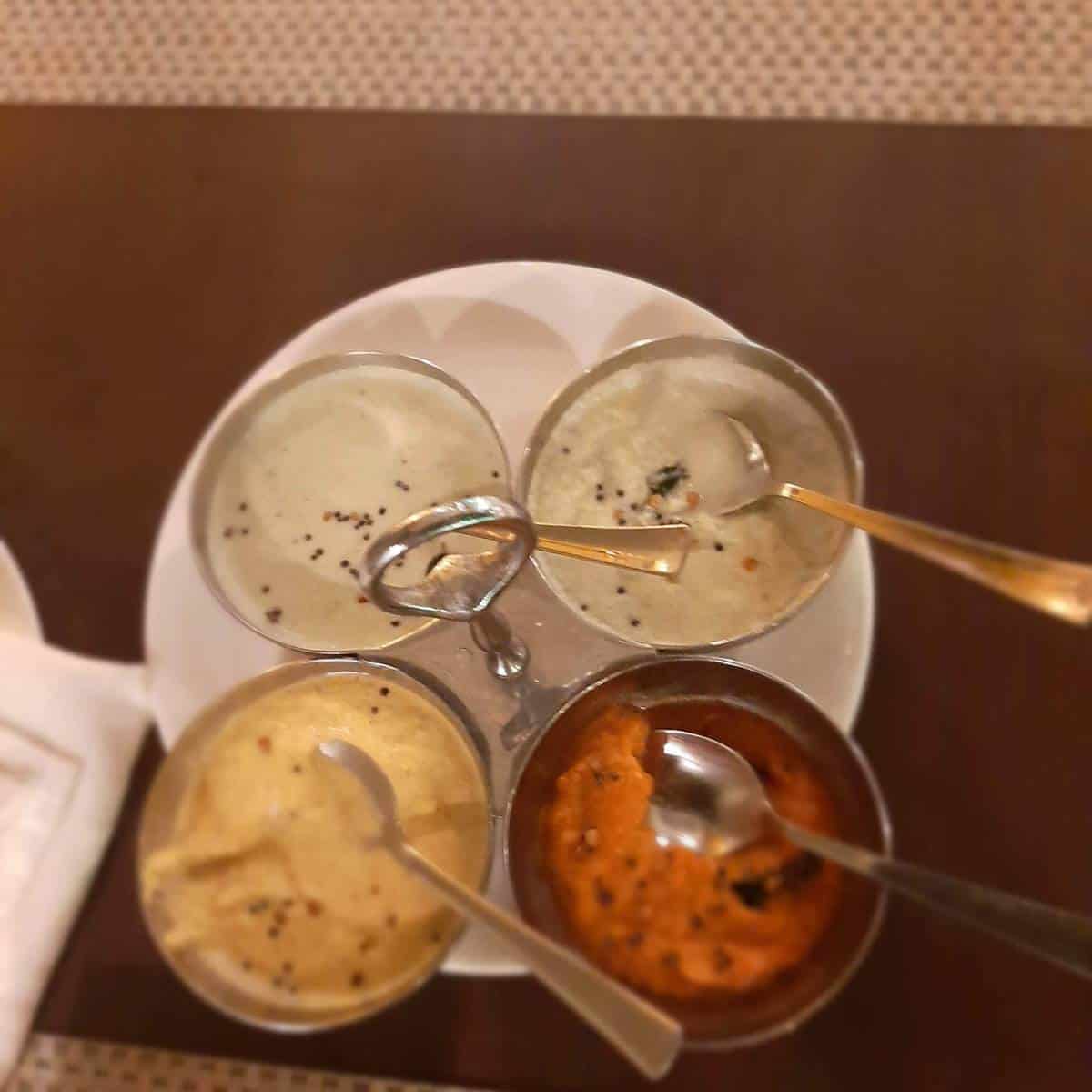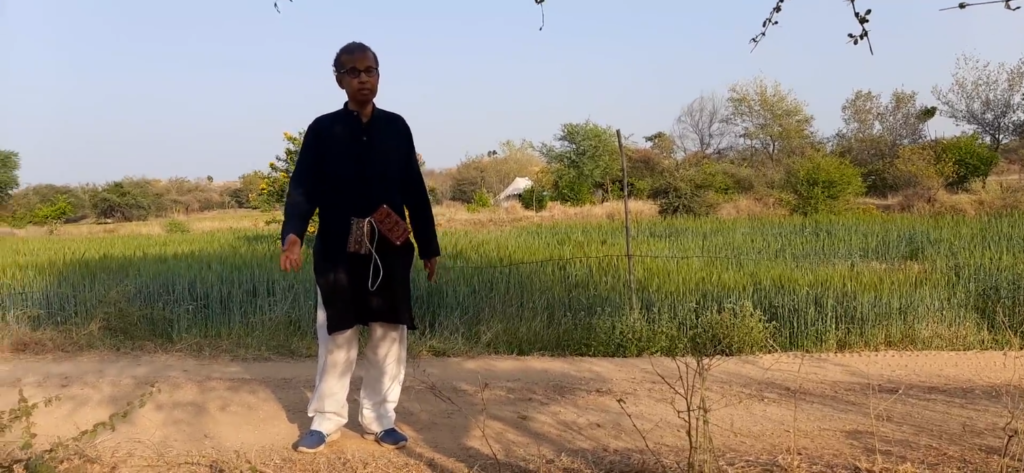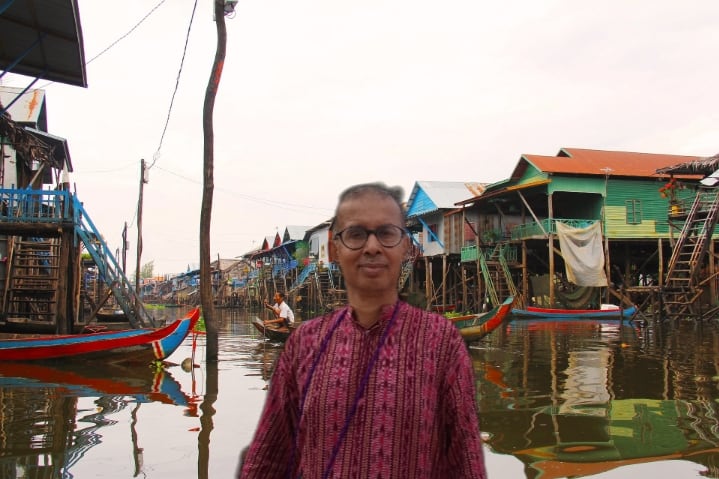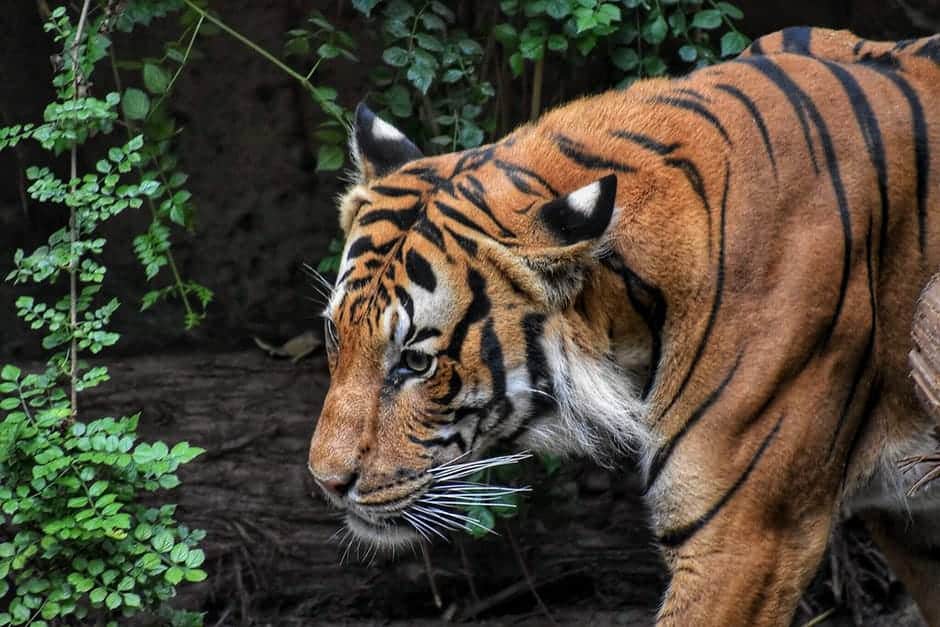By Murli Menon
At Kolkata, I planned to visit Old Kolkata to try to locate vegan recipes and street food for my vegan food blog and forthcoming book. Later, I planned to reach Jharkhali village in the Sunderbans, via Canning. From Jharkhali, I planned to visit the interiors of the Sunderbans while camping overnight on a boat. It is indeed unbelievable that a pocket of tranquility exists just a few hours away from the hustle and bustle of Kolkata. The long cruise through the backwaters of Sunderbans is an ideal tonic to destress one’s body, mind and soul. As a bonus, I could also click some postcard picture like photos of the sunset at Jharkhali and Sonagali.

Trying to spot the elusive Royal Bengal tiger at Sunderbans requires a tremendous amount of faith and patience. The wait could be a few hours, days or weeks. But stump tailed macaques and a variety of large water-birds can be easily sighted. The mangrove forest cover is rapidly receding due to the pressures of industrialisation and unless replantation drives are carried out on a priority, one of nature’s most serene spots may become a long lost memory.
Meditating on the roof of the rocking boat as it gently swayed in the rolling waves, on a full moon’s night when surrounded by dense forests, with the sounds of bats, crickets and owls was an endearing experience. Just the stillness of the night, the slapping sound of the waves, the soothing moonlight and the jungle sounds put me to a deep and dreamful sleep throughout our boat safari through the Sunderbans.
From the Sunderbans, I intended to travel back to Kolkata and head for Bhubaneshwar en route to the Chilka Lake, to spend a week, bird-watching at Chilka Bird Sanctuary. From Chilka, I would be proceeding to Hyderabad en route to the Srisailam Tiger Reserve in Andhra Pradesh. But, my body, mind and soul were rejuvenated with fresh energy after being bathed in the elements all through my journey from Kaudiyala to Jharkhali. I could finally get some Kerala bananas (those small bananas with seeds) at the villages near Jharkhali. At one rupee per banana, it was a steal compared to the 10 Baht I paid in Thailand and 1 Ringgit, I paid in Malaysia!
The journey from Kolkata to Bhubaneshwar gives one enough time to have a good night’s sleep. I hit the pillow as soon as I boarded the train and awoke to alight at Bhubaneshwar Station in the morning. From Bhubaneshwar, I proceeded to Balugaon which is the base camp for all trips to Chilka Lake. I met the forest officials at Chilka, who arranged my visit to the core areas of the Chilka Bird Sanctuary by a speed boat. The incredible pictures clicked during this speed boat trip tells its own story.

A speed-boat ride on the blue mirror like surface of Chilka Lake is a hypnotising experience. One can see water as far as his/her eye can see. The four-hour boat ride through the sanctuary gave me an opportunity to sight the bald-headed Eagle, Brahminy Kite, Coppersmith Barbet and several other colourful birds.
Some of the other species of birds that can be sighted during the boat cruise along Chilka include Bronze Winged Jacana, Purple Heron, Grand Coucal, Green Billed Malpuha, Great Egret, Oriental Magpie Robin, Chinese Pond Heron, Roufus Woodpecker, Whiskered Tern and Great Egret amongst numerous others.
The boat trip across Chilka Lake takes you to an ancient Kali Temple at the centre of the Lake. This temple is known as the Kalijai Temple and is a must stop for all boats crises-crossing this giant lake. The view from the temple is spectacular.
From Chilka, I returned to Bhubaneshwar to catch the Konark Express to Hyderabad en route to Srisailam Tiger Reserve.
The vegan delights of Bhubaneshwar were scattered around the old city and I had to painstakingly explain my objective to all the street-side vendors. Outside the station, a stall selling hot idlis with coconut chutney and medu-vadas did brisk business. I could sample some excellent vegan dishes at Jharkhali, Balugaon, and Bhubaneshwar.
The journey from Bhubaneshwar to Hyderabad was relaxing, as I started documenting my travel experience into my Netbook and also took some much-needed rest in the train. We arrived at Secunderabad Station in the morning and almost immediately I took the Karnataka State Road Transport Corporation (KSRTC) bus to Srisailam. The six-hour journey from Hyderabad to Srisailam is through a long and winding road which makes its way up the Srisailam hills. The last two hours of the bus ride is through the Srisailam Tiger Reserve. Srisailam is a canopy of green overlooking the cobalt blue waters of the Krishna River. Early in the morning one can see vendors steaming idlis on the road-side and serving it hot with coconut chutney, both wrapped in freshly cut plantain leaves. At Srisailam Town, one can see large rectangular tawa’s used to make four dosas at a time, outside the famous eating joints. From the samosas of Rishkesh to the aloo dum of Benares through the litis of Jasidih to the Baingun bhaja of Jharkhali via the dum alu of Balugaon, I had reached the humble idlis of Srisailam town.

Srisailam offers a plethora of activity for tourists. One can take the ropeway to the Srisailam dam and can take a leisurely cruise on the Krishna RIver. The beauty of the rapidly flowing Krishna River through the verdant Srisailam valley is balm for sore eyes.
Boating on the Krishna River is far different compared to the steady cruise at the Sunderbans. The rapidly flowing waters and large rocks strewn across the river make navigating and boating an adventurous experience.
The trip through the Srisailam Tiger Reserve offers a bird’s eye view of the flowing rapids of the Krishna River. The gleaming sunlight reflected in the crystal-clear waters makes the river appear like a silvery rivulet snaking its way through the green valley.
From Hyderabad, I planned to travel to Tryambakeshwar via Manmad and further to Bhimashankar Hills near Pune, before flying back to Ahmedabad, directly from Pune, to complete the 5,000 KM circular journey that took me to all four corners of India.
The more one sees of the Krishna River, the more one is tempted to see it. I returned to Hyderabad in the late hours of the night and after a well-deserved night’s rest set out to board the Kakinada-Manmad Express to Manmad. Taking a dip in the cold waters of the Krishna at dawn and dusk had rejuvenated me with a new energy to reach the Godavari and Narmada. In six weeks, I would be completing a round trip around India. As I have already taken a dip in the Kaliganga at Malpa, in the Indus at Leh and in the Kaveri at Srirangapatanam, I consider myself lucky to have visited all the major rivers of India in my thirties! Of course, I have had the good fortune of river rafting the Kinabatangang and Longongong rivers in Malaysia, boating on the Mekong in Laos, Cambodia, Thailand and Burma.
In addition, I have visited Kailash Mansarovar in Tibet twice.

